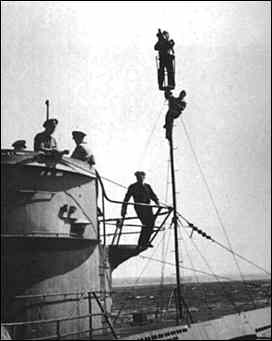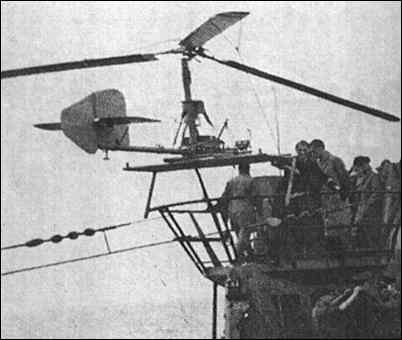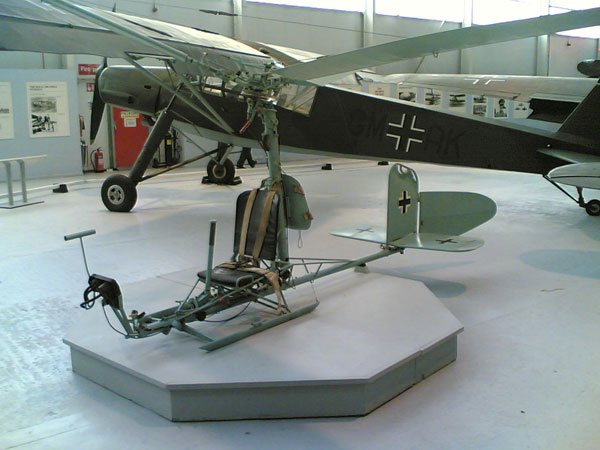The Focke Achgelis Fa 330 Bachstelze (Wagtail)
 An attempt to expand the view without Bachstelze. |
The Focke Achgelis Fa-330 Bachstelze (Wagtail) was specially developed for use in the U-boats as an observation post. A free-turning three-blade rotor was mounted on a vertical pylon attached to a simple framework on which there was an unprotected observer's seat. Carried aft on a tubular boom was a rudder and a horizontal stabilizing surface. The observer had controls for operating the rudder and for tilting the rotor head. The kite was connected to the U-boat by cable and winch and maintained height when towed by a surfaced submarine. The observer could communicate with the U-boat by telephone.
Technical
The Fa-330 Rotary Wing Kite, built in Germany during WW II, operated on the principle of the autogyro. The aircraft was designed to provide an elevated observation platform for one man while being towed behind a surfaced submarine. It was attached to the submarine by a steel cable working from a winch on the deck.
This was a rotor kite, towed behind an U-boat to increase its vision range. The scheme was abandoned because it cost too much time to recover it and the observer on it when the U-boat was attacked. About 200 were built.
Operations
It could hold an altitude of about 400 ft, and could see about 25 miles with powerful binoculars and report by telephone. In emergency the pilot could jettison the rotor and by recovered by parachute. Only a few were used and only in the Southern Atlantic and the Indian Ocean where aircraft patrols were not so common at the time, but were out of business by the growing Allied air power which demanded crash dives too fast for the poor autogyro pilot to be recovered.

While aloft, the pilot was in contact with the submarine by telephone. In normal return to the sub, the winch wound in the cable until the Fa-330 was on the deck. There was an emergency procedure, however, by which the pilot could jettison the blades and rotor hub. When the rotor assembly separated, it automatically opened a parachute attached to both the machine and the pilot. The pilot then released his safety belt and the aircraft dropped into the sea, leaving the pilot descending alone by parachute.
Bachtelze on display
There were about 200 copies built by the Germans. Several of them exist today in museums, both in England and also in the USA.

This Fa-330 Bachtelze is on display at RAF Cosford near Telford, England (see their page).
Photo courtesy of David Bagshaw.

Different view of the same Bachtelze at Cosford. Photo courtesy of David Bagshaw.
Bachstelze on display
The North East Air Museum at Sunderland, UK has one on display.
|
| ||||||||||||||||||||||||
Material prepared by Rick, photos by Sandro



